Heavy Metals On Earth Originate From Supernova Explosion
Eddie Gonzales Jr. – MessageToEagle.com – A new research by a University of Guelph physicist suggests that most of them were spewed from a largely overlooked kind of star explosion far away in space and time from our planet.
“Some 80 per cent of the heavy elements in the universe likely formed in collapsars, a rare but heavy element-rich form of supernova explosion from the gravitational collapse of old, massive stars typically 30 times as weighty as our sun,” U of G physics professor Daniel Siegel, said in a press release.
That finding overturns the widely held belief that these elements mostly come from collisions between neutron stars or between a neutron star and a black hole, said Siegel.
Using supercomputers, researchers simulated the dynamics of collapsars, or old stars whose gravity causes them to implode and form black holes.
“Under their model, massive, rapidly spinning collapsars eject heavy elements whose amounts and distribution are “astonishingly similar to what we observe in our solar system,” said Siegel.
Until now, scientists thought that these elements were cooked up mostly in stellar smashups involving neutron stars or black holes, as in a collision of two neutron stars observed by Earth-bound detectors that made headlines in 2017.
Ironically, said Siegel, his team began working to understand the physics of that merger before their simulations pointed toward collapsars as a heavy element birth chamber.
“Our research on neutron star mergers has led us to believe that the birth of black holes in a very different type of stellar explosion might produce even more gold than neutron star mergers.”
What collapsars lack in frequency, they make up for in generation of heavy elements, said Siegel. Collapsars also produce intense flashes of gamma rays.
“Eighty per cent of these heavy elements we see should come from collapsars. Collapsars are fairly rare in occurrences of supernovae, even more rare than neutron star mergers – but the amount of material that they eject into space is much higher than that from neutron star mergers.”
The team’s model can be soon validated by observations when infrared instruments such as those on the James Webb Space Telescope, set for launch in 2021, should be able to contribute with further data.
Written by Eddie Gonzales Jr. – MessageToEagle.com Staff
Related Posts
-
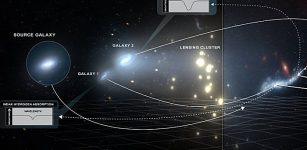 Galaxy Is Used As A ‘Cosmic Telescope’ To Study Heart Of The Young Universe
No Comments | May 19, 2022
Galaxy Is Used As A ‘Cosmic Telescope’ To Study Heart Of The Young Universe
No Comments | May 19, 2022 -
 What If Extraterrestrial Observers Called, But Nobody Heard? – Researchers Ask
No Comments | Mar 2, 2016
What If Extraterrestrial Observers Called, But Nobody Heard? – Researchers Ask
No Comments | Mar 2, 2016 -
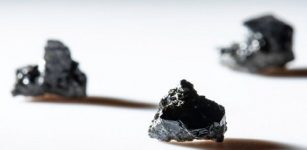 Resources In Lunar Soil And How They Might Be Used To Sustain Life – Study
No Comments | Aug 7, 2021
Resources In Lunar Soil And How They Might Be Used To Sustain Life – Study
No Comments | Aug 7, 2021 -
 First Probable Impact Crater – Buried At A Depth Of 1,000 M – Identified In Spain
No Comments | Sep 30, 2022
First Probable Impact Crater – Buried At A Depth Of 1,000 M – Identified In Spain
No Comments | Sep 30, 2022 -
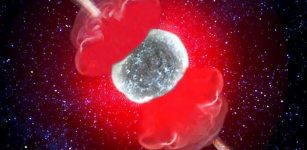 Existence Of A ‘Hot Cocoon’: High-Speed Supernova Reveals Earliest Moments Of A Dying Star
No Comments | Jan 17, 2019
Existence Of A ‘Hot Cocoon’: High-Speed Supernova Reveals Earliest Moments Of A Dying Star
No Comments | Jan 17, 2019 -
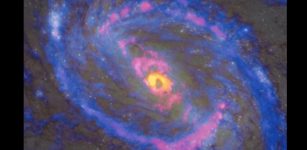 Spiral Galaxy Messier 77 (NGC 1068) As Seen By ALMA And The Hubble Space Telescope
No Comments | Sep 15, 2023
Spiral Galaxy Messier 77 (NGC 1068) As Seen By ALMA And The Hubble Space Telescope
No Comments | Sep 15, 2023 -
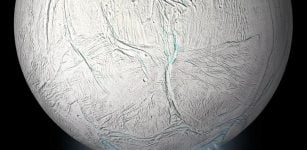 Large Subsurface Ocean On Enceladus Appears To Be Churning – Could There Be Alien Life There?
No Comments | Apr 2, 2021
Large Subsurface Ocean On Enceladus Appears To Be Churning – Could There Be Alien Life There?
No Comments | Apr 2, 2021 -
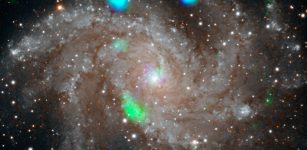 NASA’s NuSTAR Observes Mysterious Flashes Of Green/Blue Spots In NGC 6946
No Comments | Sep 7, 2019
NASA’s NuSTAR Observes Mysterious Flashes Of Green/Blue Spots In NGC 6946
No Comments | Sep 7, 2019 -
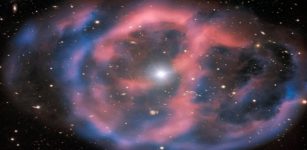 A New Type Of Pulsating Star – Discovered
No Comments | Aug 5, 2019
A New Type Of Pulsating Star – Discovered
No Comments | Aug 5, 2019 -
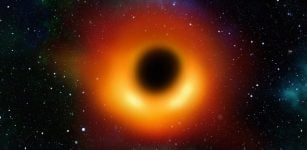 Light From Behind A Black Hole Observed For The First Time
No Comments | Jul 30, 2021
Light From Behind A Black Hole Observed For The First Time
No Comments | Jul 30, 2021

